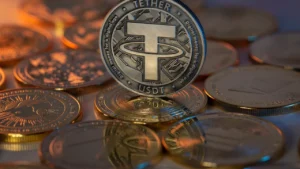A recent podcast appearance by Ripple CEO Brad Garlinghouse sparked a brief firestorm in the crypto world. His comments regarding Tether and the U.S. government were interpreted as a challenge to Tether’s stability, leading to a heated response from Tether’s CEO. However, Garlinghouse maintains his words were misinterpreted. Let’s delve deeper into this potential misunderstanding.
A Spark in the Podcast
During an interview, Garlinghouse mentioned the U.S. government’s growing focus on regulations, particularly concerning USD-backed stablecoins like Tether (USDT). He highlighted the importance of Tether within the crypto ecosystem, while expressing his belief that the U.S. government might be “going after” them. This seemingly innocuous statement triggered a strong reaction from Tether.
Tether Fires Back
Tether CEO Paolo Ardoino took to social media to vehemently defend his company. He labeled Garlinghouse’s comments as “uninformed” and emphasized Tether’s commitment to transparency, security, and regulatory compliance. Ardoino detailed USDT’s robust reserves, collaborations with law enforcement agencies, and its role in facilitating financial inclusion for millions in developing markets.
Clearing the Air
Following the online spat, Garlinghouse clarified his stance. He emphasized that he considers Tether “hugely important” to the ecosystem. His intention, he explained, was to highlight the potential regulatory scrutiny Tether might face from the U.S. government, given its dominant position in the stablecoin market.
Also Read: XRP vs. USDT: Ripple Shifts Gears in ODL Amidst SEC Lawsuit (Will Overseas Operations Be Affected?)
It appears the initial interpretation of Garlinghouse’s comments might have been a misunderstanding. With Ripple embroiled in its own legal battles with the SEC and planning its own stablecoin launch, the timing of his remarks may have raised suspicions. However, Garlinghouse seems to have intended a friendly warning about potential regulatory hurdles for Tether.
The Takeaway
This episode highlights the complexities of communication within the crypto space. Nuance can be easily lost in short statements, leading to misunderstandings and unnecessary conflict. While the situation appears to be a case of miscommunication, it underscores the ongoing regulatory uncertainty surrounding stablecoins and the potential for competition within the space.sharemore_vert



